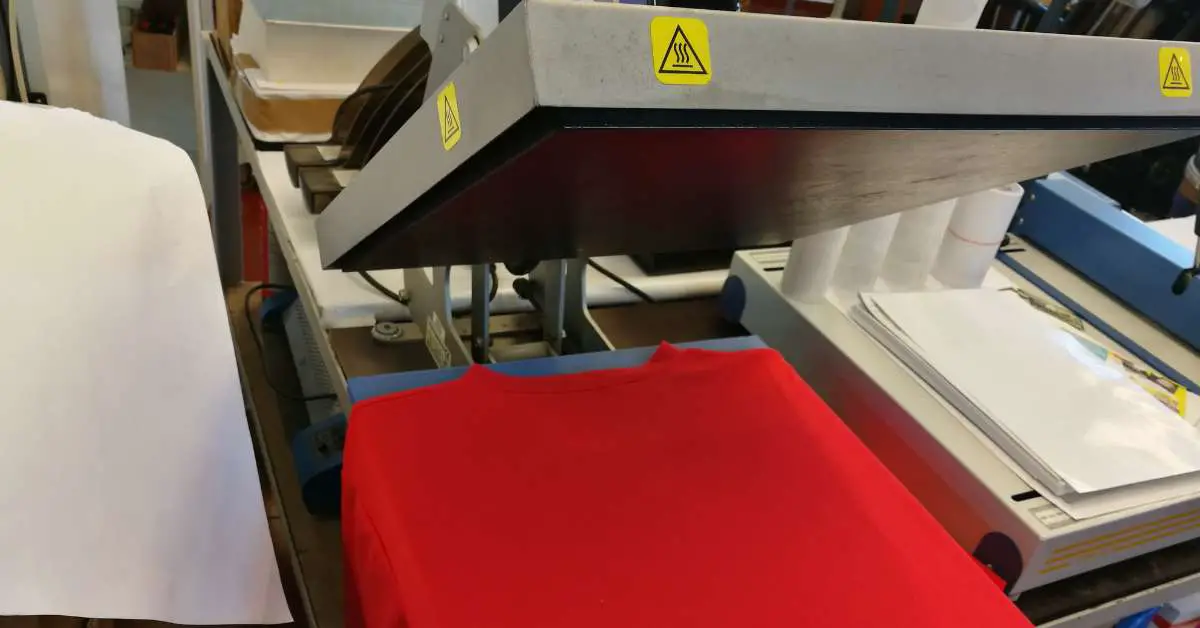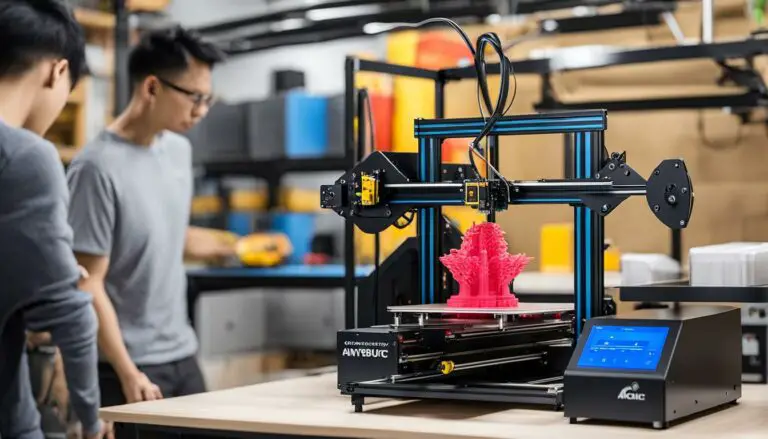Heat Press Settings for Sublimation: A Complete Guide
Originally posted on October 26, 2023 @ 2:06 pm
Do you want to achieve perfect outcomes for your sublimation tasks? It takes more than just great designs; it also requires accuracy in temperature and pressure when using a heat press. This is why it is crucial to follow the correct heat press settings for sublimation.
In our in-depth exploration, we unravel the intricate details of optimal temperature, time, and pressure settings. Whether you’re a beginner aiming for professional-quality prints or an experienced sublimation artist seeking perfection, this article is your go-to resource.
Discover the secrets behind vibrant, long-lasting designs that stand the test of time. Master the art of sublimation with our expert insights and elevate your creative endeavors to new heights.
Key Points – What Settings Should I Use For Sublimation Printing?
- Temperature: Set the heat press to 380°F (193°C) for most substrates; adjust based on the specific material’s requirements.
- Time: Apply medium pressure for 45–60 seconds to allow the sublimation ink to fully penetrate the substrate.
- Pressure: Ensure even and firm pressure to prevent uneven prints or ink bleed.
- Cooling: Allow the item to cool naturally after transfer to avoid smudging or distortion of the design.
Sublimation Heat Press Settings – The Details
Achieving the perfect sublimation print relies heavily on an accurate heat press and temperature settings. As per experts, Sawgrass here is the optimum setting.
Temperature
The correct combination ensures vibrant, long-lasting designs. For most substrates like polyester fabrics, ceramics, or metals, a standard heat press temperature of 380°F (193°C) works well.
However, it’s crucial to consult the specific instructions provided by the sublimation ink and substrate manufacturers.
Duration or Time
The duration of the press, typically lasting between 45 and 60 seconds, is equally vital. This timeframe allows the sublimation ink to transform from a solid to a gas, embedding it into the material permanently.
Applying consistent, firm pressure is essential to guarantee uniform ink transfer without smudging or uneven prints.
Understand the Fabrics/Materials
Additionally, understanding the nuances of different materials is crucial. For instance, certain fabrics might require slightly lower temperatures to prevent scorching, while thicker materials like wood might need longer press times to ensure complete ink penetration.
It’s advisable to conduct a test print transfer initially, experimenting with time, temperature, and pressure settings to achieve the desired outcome.
Cooling Time
Lastly, after the transfer process, allowing the item to cool naturally is essential. Rapid cooling might lead to moisture smudging or distortion of the transfer print design.
Patience in cooling the print transfer ensures the sublimation print sets correctly, resulting in professional-quality, durable, and visually striking products.
What Temperature Do I Put My Heat Press On For Sublimation?
As per experts set your heat press to the recommended temperature of 380°F (193°C) for most materials like polyester, ceramics, and metals.
However, always refer to the specific guidelines provided by the sublimation ink and substrate manufacturers. These precise settings allow the sublimation ink to transform into gas, embedding it permanently into the material.
Consistent and accurate temperatures are vital for achieving vibrant, durable transfer prints. Remember, adjusting the temperature might be necessary based on the material, so consulting the instructions is crucial for optimal results.
How To Cut Sublimation Paper With Cricut?
To cut sublimation paper with Cricut, follow these steps:
Prepare Your Design
Use design software to create or import the image you want to cut. Ensure the design fits within the dimensions of your sublimation paper and the cutting mat you will be using.
Load Sublimation Paper onto the Mat:
Place the sublimation paper onto the Cricut cutting mat with the printable side facing up. Sublimation paper usually has a brighter white side, which is the printable side.
Set Material and Blade:
In Cricut Design Space, select the appropriate material setting for the sublimation paper. If there isn’t a specific setting, start with a setting for heavyweight or cardstock paper. Adjust the blade depth accordingly to ensure a precise cut without cutting through the mat.
Load the Mat into the Cricut Machine:
Load the cutting mat into the Cricut machine and follow the prompts on the software to initiate the cutting process.
Unload and Weed:
Once the cutting is complete, unload the mat from the machine. Carefully remove the cut design from the sublimation paper. This process is called weeding and involves removing the excess paper around your design.
Transfer to Substrate:
After weeding, you can transfer the cut sublimation paper onto your substrate, such as a t shirt, or mug, using heat-resistant tape. Ensure the design is properly aligned before the sublimation process.
What is The Best Sublimation Paper?
Determining the best sublimation transfer paper depends on your specific needs and the printer you use. However, several popular options in sublimation material paper are widely regarded by experts for their quality and compatibility with various sublimation systems.
A-SUB Sublimation Paper:
A-SUB transfer paper is often favored for its fast ink absorption and high transfer rate. It works well with both Ricoh and Epson printers and is compatible with most sublimation surfaces. Its quick-drying feature reduces the risk of smudging, ensuring sharp and vibrant transfer.
TexPrint Sublimation Paper:
TexPrint transfer paper is known for its excellent color reproduction and ink release. It offers consistent results, making it a favorite among professional sublimation artists. This paper is available in different weights and sizes, catering to various printing needs and lighter pressure.
DyeMaster Sublimation Paper:
DyeMaster sublimation paper is specifically designed for Ricoh and Virtuoso printers. It boasts fast drying times and exceptional color output. Its anti-curl technology prevents the paper from curling during the printing process, ensuring smooth and accurate prints.
Beaver Paper TexPrintXP:
Beaver Paper’s TexPrintXP is revered for its high-resolution printing capabilities. It delivers sharp, detailed images and text, making it ideal for intricate designs. This paper is suitable for both hard and soft materials, offering versatility in sublimation applications.
When choosing sublimation paper, consider factors such as printer compatibility, drying time, color vibrancy, and substrate versatility. Conducting small tests with different papers can help you determine which one aligns best with your specific printing requirements and equipment.
Can You Sublimate At 350 Degrees?
Sublimation typically occurs at the best temperature of 380°F to 400°F (193°C to 204°C). While you might find sources suggesting lower temperatures, it’s essential to follow the specific recommendations of your sublimation ink and paper manufacturers.
Deviating from the recommended temperature chart range can result in incomplete transfers, faded colors, or other quality issues. Consistent and accurate heat is vital for successful sublimation, ensuring the ink transforms into gas and embeds permanently into the substrate. Always adhere to the provided guidelines to achieve a vibrant, durable, and professional-quality image.
How Hot Should Heat Press Be For Sublimation?
For sublimation, the cardinal rule is that the heat press temperature falls within the range of 380°F to 400°F (193°C to 204°C).
These higher temperatures ensure that the sublimation ink transfers into a gas, embedding itself permanently into the substrate, such as polyester fabric, parchment paper, or coated materials like ceramics and metals.
However, it is crucial to refer to the specific heat and timing /temperature chart provided by your sublimation ink and substrate manufacturers. Different materials may require slight adjustments in heat/temperature to prevent scorching heat or achieve optimal results.
Using the correct heat press temperature is essential for a vibrant, durable, and professional-quality sublimation image, ensuring the ink fully permeates the material and results in long-lasting designs.
Can I Use Sublimation Ink on Heat Transfer Paper?
No, sublimation ink is not designed for use on regular heat transfer paper. Sublimation ink is unique in that it turns into gas under high heat and bonds directly with heat-transfer vinyl polyester fibers.
Standard heat transfer paper lacks the special coating necessary to facilitate this process.
If you use ink on regular transfer paper, it won’t effectively transfer onto the fabric and won’t produce the vibrant, permanent results characteristic of sublimation printing.
To achieve the best results, use a sublimation printer or paper specifically designed for ink, ensuring it has the appropriate coating to hold the ink during the heat transfer process, leading to professional-quality, durable prints.
Can You Sublimate 65 Polyester 35 Cotton T shirt?
While sublimation works best on 100% polyester fabrics due to the polyester molecules opening up under high heat, allowing the ink to penetrate, it is challenging to achieve the same level of vibrancy and durability on blended fabrics like 65% polyester and 35% cotton.
Cotton fibers do not have the same chemical structure as polyester, so they don’t hold ink in the same way.
Sublimating on a polyester-cotton blend may result in a faded or washed-out appearance as the ink primarily bonds with the polyester fibers, leaving the cotton fibers mostly untouched.
For optimal results, it’s recommended to use 100% polyester garments or items for sublimation coating printing to ensure vibrant and long-lasting designs.
If you’re set on using a blend, consider testing a small sample first to assess the outcome before proceeding with larger or more important transfer sublimation projects.
What Are Sublimation Settings for Shirts and Polyester Fabric?
For transfer on shirts and polyester fabric/different substrates, the recommended settings are a heat press temperature of 380°F to 400°F (193°C to 204°C) and a pressing sublimation times of 45 to 60 seconds. Medium to firm pressure should be applied.
These settings allow the ink to transform into gas, embedding it permanently into the polyester fibers, ensuring vibrant and durable prints.
However, always refer to the specific guidelines provided by your ink and fabric manufacturers, as slight adjustments in temperature and time might be necessary based on the material to achieve optimal results.
What Temperature to Sublimate a Shirt?
To sublimate a shirt, the recommended temperature falls within the range of 380°F to 400°F (193°C to 204°C). This heat temperature range allows the ink to transform into a gas, embedding itself permanently into the polyester fibers of the shirt.
Polyester is crucial for the transfer, as the ink molecules bond best with its fibers.
It’s essential to use a heat press machine set to the specified temperature for around 45 to 60 seconds, ensuring even medium pressure and a consistent application.
Always follow the specific guidelines provided by the ink and shirt manufacturers to achieve vibrant, durable, and professional-quality sublimated shirts.
Sublimation Printing Tips
- Quality Materials: Use high-quality ink, paper, and polyester-based materials for vibrant and durable prints. Pre-press the different fabric materials. If needed, use a vapor foam kit to prevent press lines during the transfer.
- Proper Design Preparation: Ensure your designs are high-resolution and tailored to the different fabrics.
- Correct Settings: Follow manufacturer guidelines for heat press transfer, time, and pressure settings to prevent over or under-sublimation. Do not use your sublimation convection oven for food.
- Test Prints: Always conduct test prints on sample materials to fine-tune settings and check colors before large-scale production.
- Use Correct Pressure and Press Time: Apply consistent, even medium pressure during heat pressing to prevent smudging or uneven prints.
- Use Correct Heat Resistant Tape and Teflon Sheet– Using the right resistant tape in sublimation is essential to prevent design shifts during pressing, ensuring precise, professional prints on mouse pads, etc. Quality heat resistance tape or heat transfer vinyl guarantees flawless, vibrant results.
- Cooling Time: Allow the substrate to cool naturally a bit longer after heat pressing the heat transfer vinyl to avoid distortion and ensure the design sets properly.
- Ventilation: Work in a well-ventilated area to disperse heat fumes of the heat transfer vinyl created during the sublimation process.
- Care Instructions: Provide customers with proper care instructions to maintain the longevity of heat transfer vinyl and sublimated products.
FAQs
How long and what temp do you press sublimation transfers?
Press sublimation blanks transfers usually vary but are optimum at 380°F to 400°F (193°C to 204°C) for 45 to 60 seconds. These settings allow the ink to transform into gas, embedding it permanently into polyester-based fabrics.
Ensure even medium pressure and cooling time for vibrant, long-lasting prints on sublimation tumblers. Always refer to specific guidelines from ink and substrate manufacturers.
What is the best Sublimation heat press settings?
The best sublimation heat press settings vary but they range from 380°F to 400°F (193°C to 204°C) with a pressing time of 45 to 60 seconds. Apply even medium pressure on the surface and ensure proper cooling for vibrant, durable prints.
Always consult the heat guidelines provided by the ink and substrate manufacturers for precise settings.
How long do you press a sublimation transfer?
Press a sublimation transfer for 45 to 60 seconds and avoid too much pressure This duration allows the ink to transform into gas, embedding it permanently into the polyester-based substrate.
Ensure heat presses have consistent pressure and adhere to the specific guidelines provided by the ink and substrate manufacturers for optimal results.
What temperature and time for sublimation heat?
For sublimation heat press settings, the recommended temperature ranges between 380°F to 400°F (193°C to 204°C). The pressing time commonly falls within 45 to 60 seconds. These settings allow the ink to transform into gas, embedding it permanently into polyester-based substrates.
Always refer to specific guidelines provided by the ink and substrate heat transfer vinyl manufacturers for precise temperature and time settings based on your materials.
Conclusion
Mastering the art of sublimation prints lies in understanding and applying precise sublimation heat press settings.
By adhering to the recommended temperatures, times, and pressures specified by both ink and substrate manufacturers, you ensure the ink permeates the heat transfer vinyl cotton fabric, metal, ceramic mugs, mug press, or other materials with plastic coating fully, resulting in vibrant, long-lasting designs.
Consistency and attention to detail are paramount in the ideal sublimation heat press settings. Proper cooling times, along with the use of quality heat-resistant tape, further enhance the final product’s quality.
With these techniques, your prints will not only be visually striking but also durable, making your creations stand out in the world of customized merchandise.








